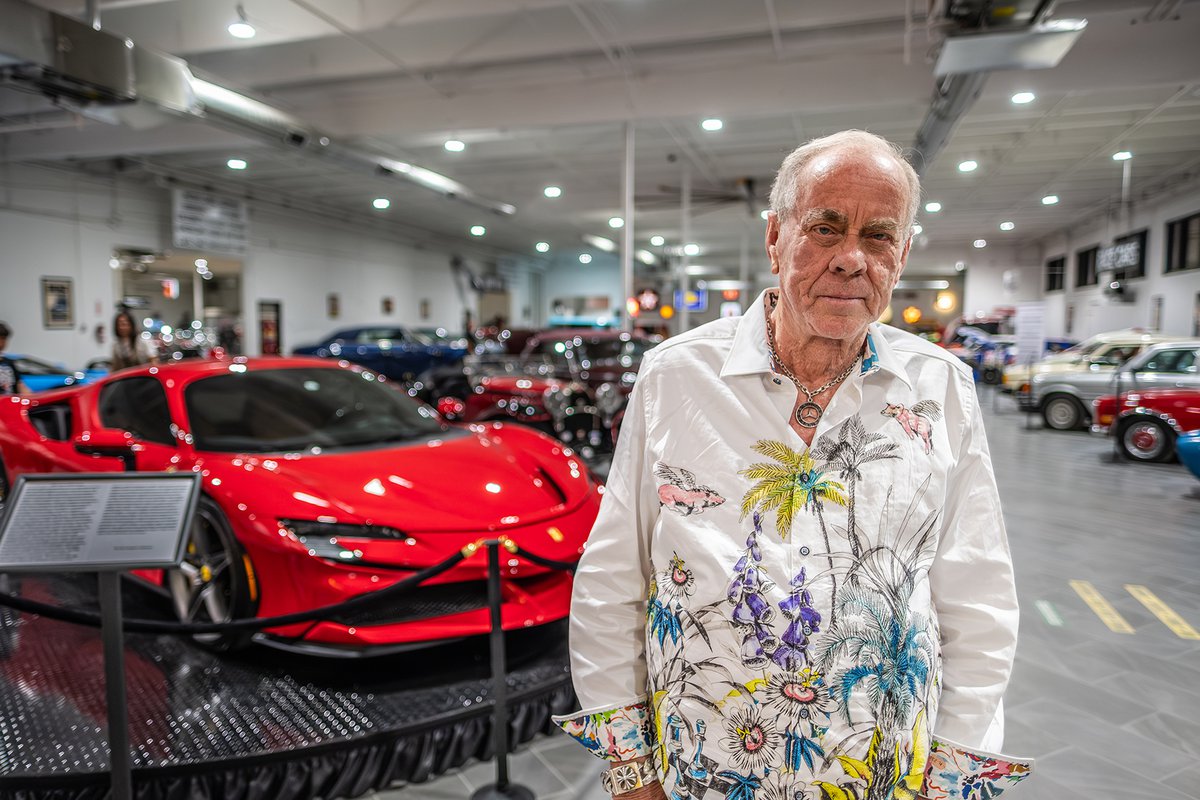It all started with a beat-up Volkswagen. Ron Sturgeon was 17 when his father died, leaving him with no money, no place to live, and a single, battered Beetle. That car became his anchor.
“I had to eat,” he says with a shrug that somehow carries both resignation and pride.
He tinkered with the car, he learned how everything worked on it, and eventually opened a Volkswagen repair shop on the road to a junkyard that would eventually define his career. By 1999, Ford Motor Company had bought out his salvage business, but the Volkswagens — the cars that first sparked his love — never left him.
Fast-forward to today, and Sturgeon is the proud founder of the DFW Car and Toy Museum, tucked into an industrial stretch of Fort Worth at 2550 McMillan Parkway. More than forty Volkswagens crowd a specific section of this space, each one a little story of memory and nostalgia. But that’s just the beginning.
This isn’t your standard car museum. Muscle cars? Not here. Sturgeon laughs at the suggestion.
“I don’t like muscle cars,” he says with zero hesitation.
Instead, his collection is a kind of cinematic oddity: microcars that make you double-take, gleaming Mercedes that feel like sculptures in motion, and the Scooby Doo Mystery Machine van that never fails to draw a crowd of wide-eyed kids.
And then there are the celebrity and historically significant rides. The Baby Blue 1955 VW Beetle, once owned by Jerry Seinfeld, a 1988 Mercedes 560SEC, once piloted by Johnny Carson, glints in the light, while the Mercedes 600 Pullman Six-door Black 1966 — a car built for the global elite —carries the weight of history in its hydraulic systems and self-leveling air suspension. Only eleven were built with a factory sunroof and air conditioning in this configuration, making it as rare as it is impressive.
And then there’s “The Dred,” the 1949 Studebaker pickup that hauled the Grateful Dead’s equipment across California in the ’60s. Once owned by Owsley Stanley, the band’s legendary sound man, the truck retains its original psychedelic livery, its patina a testament to decades of rock-and-roll history. Additionally, there are more celebrity vehicles, as well as some very fast and very expensive cars. Oh, yeah, and every one of these road relics runs. Sturgeon and his crew start each car once a month to ensure they are all in good working order.
If that weren’t enough, there’s a working slot car track that lights up the eyes of kids and adults alike, and a corner devoted to cars that shouldn’t exist — vehicles whose design flaws earned them infamy, like the Pontiac Fiero. They’re mistakes that became curiosities, and in this museum, they feel right at home.
And then, of course, there are the toys. More than 3,000 automotive-themed collectibles —Schuco, Tipp, Bandai, Marklin — line the shelves, many still in their original packaging. Kids, collectors, and history buffs alike pore over them, imagining life on a smaller, tinier scale. It’s nostalgia and craftsmanship, merged into something almost tactile — something you can almost touch and feel, even if only with your imagination.
The museum itself is a story of improbable growth. For years, Sturgeon’s cars were scattered across warehouses, squeezed into a 4,000-square-foot museum in Haltom City. Eventually, he realized he couldn’t hide them anymore.
“I decided it was just time,” he says.
Now, the DFW Car and Toy Museum stretches 150,000 square feet — a place that feels like part shrine, part carnival, part community hangout. Dogs are welcome. Families linger. And admission is free.
Since opening in April, it’s topped TripAdvisor’s Fort Worth attractions list, outshining the Sid Richardson Museum and the Water Gardens. Five-star reviews pour in daily. Couples argue over dream cars, kids squeal over Volkswagens, and car nerds swap stories about long-lost Karmann Ghias. Shoot, the museum even made our Best Of list for 2025.
Through it all, Sturgeon’s love for Volkswagens remains palpable.
“They resonate with everybody,” he says. “Even younger people still love Volkswagen bugs.”
That sense of playfulness threads through the entire museum. Visitors snap photos of the robotic floor scrubber, “Fast Fred,” named after Sturgeon’s twin brother, as it glides around cars like a curious little automaton. Volkswagen campers form a mini campsite. Oddball cars, celebrity vehicles, toys, and slot cars mingle freely, creating a museum that is both chaotic and oddly perfect.
It all traces back to that beat-up Beetle, to a teenager who had no choice but to learn, to tinker, to survive. Now, decades later, that same devotion has become a museum big enough to hold everyone else’s memories too.
“Even 40 years later, I still love Volkswagens,” Sturgeon says. “That’s where it all started, and it’s never left me.”
